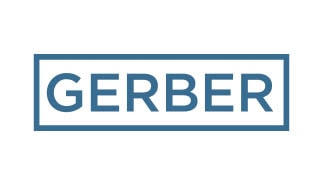Published on
September 20th, 2021The More You Know: Basic Plumbing Terminology
Whether you’re trying to purchase parts at a hardware store for your New York City duplex or calling experts like Sanitary Plumbing to describe a problem that requires a service call to your apartment building, understanding basic plumbing terminology is essential. Here’s a glossary of common terms to give you and your staff a hand.
Basic Plumbing Terminology
Aerator
The screw-on tip of a faucet that mixes air into the water to reduce splashing.
Anode rod
A water heater part that protects the tank from corrosion from aluminum or magnesium.
Backflow device
A device that requires annual inspection in NYC and prevents the flow of wastewater in the wrong direction, which could contaminate clean water for drinking, bathing, and cleaning.
Ballcock
Part of a gravity-operated toilet that opens during a flush in order for water to be distributed (it closes again automatically once the tank refills and the float rises high enough).
Bleed
The process of releasing air in a pipe or steam radiator via a valve.
Branch drain
A drain between a fixture, like a toilet, and the main drain.
Closet bend
A part that connects a closet flange (see below) to a toilet’s drain.
Closet flange
A ring on the floor that anchors both the toilet above and the closet bend below in place.
Coupling
A piece connecting two pipes or plumbing components (may also be called a fitting).
Escutcheon
A cover beneath a faucet handle that protects and aesthetically blocks the hole from where the fixture emanates.
Fall
Also called the pitch or flow, this describes the slope required for proper pipe drainage.
Fixture
A device, such as a sink, shower, or toilet, that delivers water or provides disposal.
Flapper valve
A part of a toilet between the tank and the toilet bowl that opens when the toilet is flushed to allow water to flow into the bowl and remove waste.
Float ball
Attached to the ballcock, this part in a toilet tank rises and falls as part of the flushing and refilling mechanism and can be adjusted to determine the depth of the water.
Flow rate
The amount of water flowing through a plumbing system, measured in volume as a function of time: gallons per minute (GPM) or gallons per hour (GPH).
Gas cock
A shutoff valve on the main gas line.
Gravity operated toilet
The traditional type of toilet still found in many NYC properties that uses gravity to assist with the flushing mechanism.
Gray water
Wastewater that does not include water from toilets.
Horizontal branch
Waste piping that runs from plumbing fixtures to the waste stack.
Hose bib
An outdoor faucet used to attach garden hoses.
Manifold
A type of fitting that connects multiple branches to the main.
Power flush
A pressurized flush system that compresses water for a more forceful flush, such as that used in public washrooms.
Pressure reducing valve
Sometimes called a PRV or pressure regulator, this part is installed in between the main water supply and a property to adjust water pressure in the property’s pipes.
Riser
A conduit running between a branch and a fixture or a branch and a higher floor.
Sewage ejector pump
Removes waste, sometimes grinding it first, from low-lying property areas where gravity can’t aid in its flow.
Sump pump
A pump used to remove rising water from storms or a low water table from lower levels of a property, usually the basement.
Supply line
A pipe that delivers water from the main line to a fixture.
T&P valve
A temperature and pressure relief valve that allows for the release of excess heat or pressure in a tank.
Tailpiece
A pipe that runs between a trap (see below) and a fixture.
Trap
A curved section of pipe in an “S” or “P” shape that prevents sewer odor from entering the interior.
Trap seal
Water that sits in a trap forming a seal to reduce the leakage of odors and sewer gas.
Trip lever
The handle and attached arm on a toilet that initiates the flush sequence; also sometimes used to refer to the drain in a bathtub that releases water.
Vent
A pipe that allows air into any part of the plumbing system.
Water hammer
Noise in pipes caused by surging water or in radiators caused by turbulent mixing of steam and condensed steam in the form of water.
Call Sanitary Plumbing for the Best in New York City
Hyper-local blue-chip plumbers for 100 years
No matter if you’re the owner of a single-family home or the property manager for a high-rise apartment building, it pays to call the experts when plumbing repairs or upgrades are out of your wheelhouse. At Sanitary Plumbing, we are proud to have been New York City’s plumbing experts for nearly a century.
We can help with everything from broken toilets and clogged sinks to full bathroom and kitchen renovations in both residential and commercial properties. We also offer emergency service for those unexpected disasters like frozen or burst pipes. Call us today at 212-734-5000 or use our convenient online form to schedule an appointment at a time that’s right for you.








